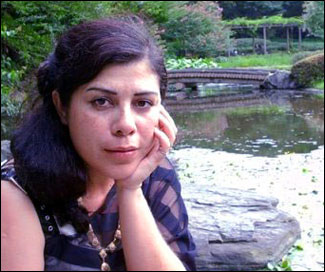Meet Astrid Morreale
Quick Q&A with a RHIC Postdoc at Brookhaven Lab
July 29, 2009

Astrid Morreale
Organization: University of California
Time spent at RHIC: 4.5 years
What do you do at RHIC?
I look at small electrically charged particles called pions, which emerge from smashing two polarized proton beams together.
What are you trying to achieve?
I hope to contribute to our current understanding of nature.
Why work at RHIC?
Smashing polarized protons is a capability that is unique to RHIC. One can get a rare glimpse into quantum mechanical properties of nature using new methods that complement the work done by other types of experiments around the world.
Have you made any discoveries at RHIC?
I am not sure yet. Only time will tell :)
What was your favorite “RHIC moment?”
After spending some years trying to find little pions within the RHIC data, I found them peering through my screen. They looked just as I, and others, imagined they would. All of the numbers I had been calculating for days and sleepless nights suddenly became real tiny charged particles emerging from nature.
Who else do you work with?
I mostly work alone for the actual calculations, although I do have the technical and intellectual support of over 300 scientists, who compose the PHENIX experiment. I also have the support of the RHIC physicists. Thus, one can say my team is 500+ people strong. I never really am alone, even if at times one feels as such.
Closing thoughts?
I would like to acknowledge the help and support of all the scientists from the Association of Students and Postdocs (ASAP). Meeting people from different science fields and hearing their stories kept my morale up and allowed me to keep the big picture of science in mind.
Editor's note: Astrid recently completed a Ph.D. program in Physics. She successfully defended her thesis on July 24, 2009 at the University of California at Riverside. Congratulations, Dr. Morreale!
2009-1361 | INT/EXT | Newsroom









